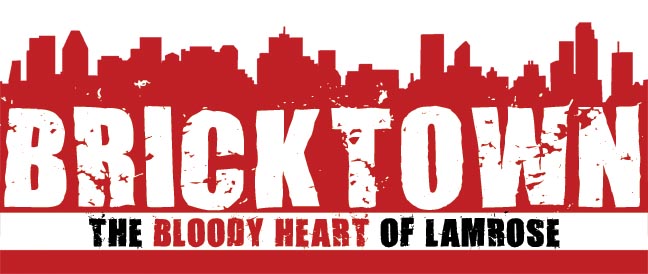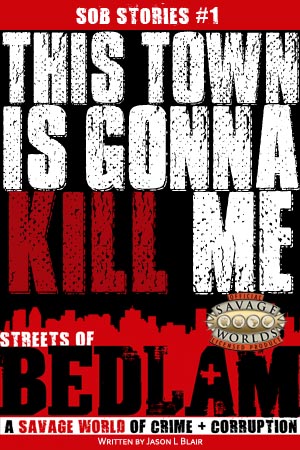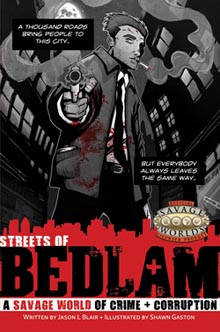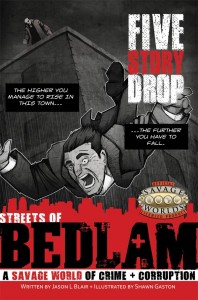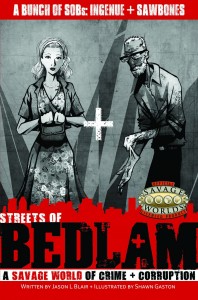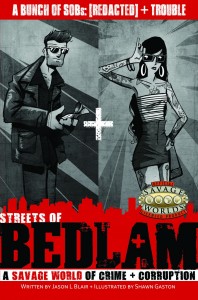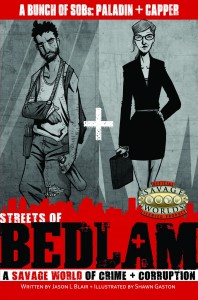The Districts: Big Church
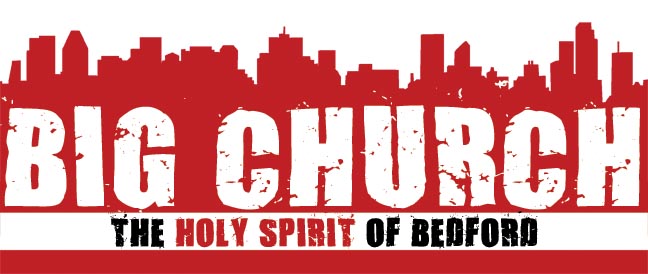
Two cities make up the area colloquially known as Bedlam: Bedford and Lamrose. A man-made river splits the two cities with the richer half, the one that quickly overcame its poorer neighbor, residing on the northwestern banks. You don’t have to walk far into Bedford to witness the influence Catholicism has on the city. While many different faiths practice and preach within the city limits, Catholicism is the big dog and the massive building christened St. Leonard Holy Cathedral is the kennel.
Bedford is a planned city. While Lamrose grew organically from humble means, Bedford is the product of purposeful investment from some of the most powerful developers, both foreign and domestic. This accounts not only for the number of right angles in the city grid but its continued affluence as well.
Planned cities tend to serve overt purposes. Vegas, for example, was built as a playground in the desert (and some say as a way for the mafia to wash their money). Bedford too was built with a purpose. While it may be hard to believe now, Bedford was envisioned (and sold to investors) as a religious oasis. St. Leonard Holy Cathedral was to be the epicenter of the Lord’s presence in America. The big question is why Bedford was built near Lamrose. You see, in Lamrose’s heyday, it was a city on the rise with a fair bit of blue-collar money in its pockets. Sold as a sister-city to Bedford, the cynical board overseeing the new city’s construction saw in Lamrose an established base full of uneducated people in need of some good old-fashioned churching.
So Bedford found a home. The area folks call Big Church is the northeast corner of the city, near the top of the Artifice River, and it is a sight to behold. A large cross, the image of the martyred savior etched into its face, shines like the sun from the massive dome atop St. Leonard Holy Cathedral. If G*d didn’t see Bedford before its construction, he certainly can now. The entire area, for blocks to the west and south, is home to the diocese, religious-oriented and -affiliated businesses, and homes reserved for the church’s star members, including the gated community of Daniel’s Reach (home to Cardinal Stratford and his compound).
As Bedford grew under the guiding hand of competent management, its sister-city slid further and further down the economic scale. Industry left Lamrose and took its paychecks with it. Half of Lamrose fled to greener pastures—those who could anyway—while the rest remained and suffered for it. Rigged election after rigged election, the seats of power were filled by folks prescribed by those pulling the strings. Lamrose, falling into grievous debt, reached out its hand to Bedford for salvation. Lamrose surrendered its independent governance and incorporated into Bedford at the height of the Reagan years giving birth to modern Bedlam.
But even Bedford’s deep coffers were unable to save Lamrose. Irreparably marred by gross mismanagement and a rising crime rate, Lamrose was soon discarded by its new master. As Lamrose’s reputation had begun to sully Bedford’s own good name, the city councilfolks devised a way to plausibly disassociate themselves from their sister-city. As a joint project between the two, the Artifice River was constructed, dividing the cities in an effort to stem Lamrose’s criminal influence from infecting the Rich City.
And all of this was overseen by the heads of Big Church whose primary duty is not the shepherding of Bedlam’s flock but protecting its own assets. Some may shake their head at such an assertion but that priority has served them, and Bedford, well. Big Church has kept the city afloat during some tough stretches. In recent times though, Big Church’s grip has become strained as poor public perception of the Catholic Church and a rise in grassroots fundamentalism has shifted attention to smaller conclaves of believers. Initially dismissed as “fringe worshipers” and “abberations,” Big Church must now come to term with a vocal minority who are being heard more and more. Well, they’re screaming more and more anyway.
Still, Big Church is mighty and not currently in threat of going anywhere. And it retains far more influence in the direction and management of Bedlam than anyone in the city center would care to admit. With the recent passing of Bishop Robinson, and his successor yet to be named, well, it’s hard to say what the future has in store for Big Church. Even harder to say what Big Church has in store for the future of Bedlam.
